Your cart is currently empty!
Jaded with Jadeite: The imposter of Chinese jade

Jadeite, was neither indigenous to the Chinese, nor considered jade by traditional Chinese terms.
Perhaps it is lost in translation, but Jade in English means very different from the Chinese idea of jade (as in ‘yù’). It might surprise you to know that that quintessential Chinese jade is not jadeite, and I will reveal in my later articles which one(s) it should be.
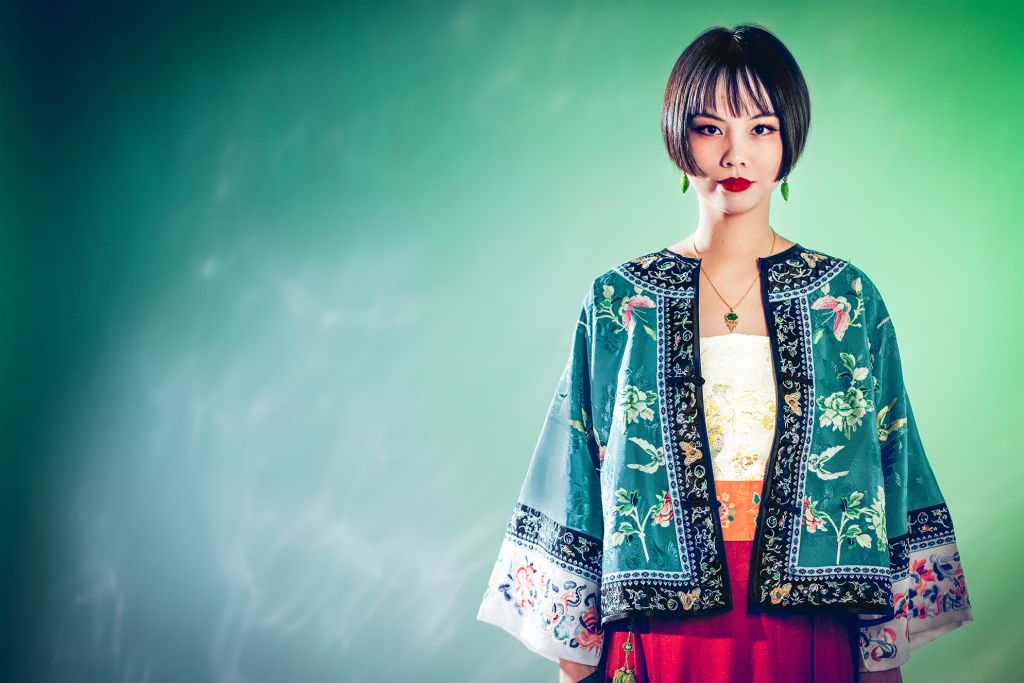
WHAT’S IN A NAME
Etymology
From the onset, Jadeite doesn’t even have jade to its Chinese name. Feicui (翡翠), literally means the red (翡)feathered bird and the green/blue(翠) feathers of kingfisher birds, which are similar to the red and green jadeite colours of jadeites. There’s another saying in ancient Chinese that the red were male birds, and blues/greens were female birds. By the 3rd century end of the Han dynasty period, there were also mentions in records that it was referring to the kingfishers of the South and we can see why since the kingfishers indigenous to China embody both the orangey-red and the turquoise blue colours.
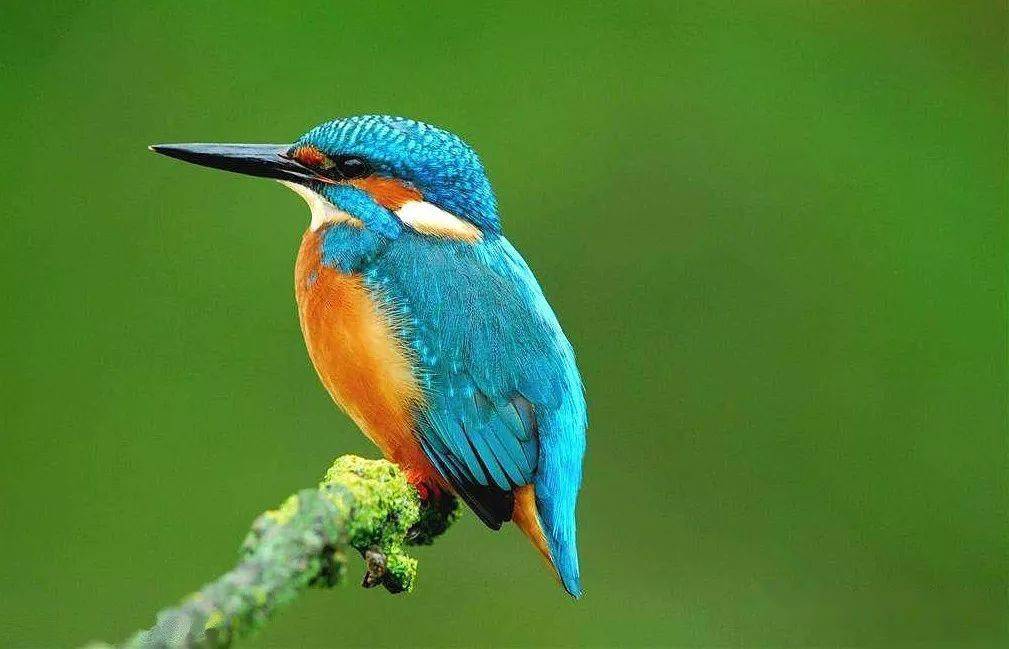
While most of us are familiar with the green jadeite, the red jadeite is actually extremely rare and pricey in today’s market as well. The red jadeite could be heat-treated to turn red and they would still be recognised as ‘grade A’ jadeite by many of the official gem testing labs because it doesn’t cause structural damage/change or introduce new chemicals into the feicui. I will talk a bit more in upcoming articles about the grading system for jade and how it’s different from general gemstones, and why we say the value of jade is really very fluffy.
Anyway! The fact that its Chinese name “Fei Cui” has no “yu玉 (loosely translate to ‘jade’ in English, which is definitely a word lost in translation)” in it, is revealing of its original identity as a lowly regarded material that was unworthy of the term ‘yu’ which the Chinese used to describe ‘all beautiful stones’ in general.
“玉,石之美者。有五德,润泽以温,仁之方也;鳃理自外,可以知中,义之方也;其声舒扬,专以远闻,智之方也;不桡而折,勇之方也;锐廉而不忮,絜之方也。”
—东汉许慎《说文解字》
Yu (“Jade”), The beautiful ones amongst the stones. There are five virtues that it possesses:
Its gentle and subtle lustre is like the kindness of a person;
Its inclusions and marks are clearly seen like the righteousness of a person;
Its sound spreads far and wide like one’s wisdom;
It would rather break than be twisted into shape like one’s courage;
While it has its edges, it never hurts, like one’s purity.
—Xu Shen (circa 2nd—1st century BCE), Eastern Han dynasty from the Etymology of Chinese words
As recently as in the 18th century Qing dynasty, it was mentioned in the records that “The Jadeite Feicui Jade of Yunnan, didn’t used to be seen as jade…and now it is valued and cost more than the real jade”. So it goes to show, just 300 years ago, jadeite Feicui was not really considered ‘real’ jade by the Chinese.
Even as recently as in the 1940s, jade collectors and enthusiasts still did not consider jadeite as real jade even though, the top 3 ‘jadestones’ in terms of popularity and price in the market then were jadeite, nephrite and serpentine.
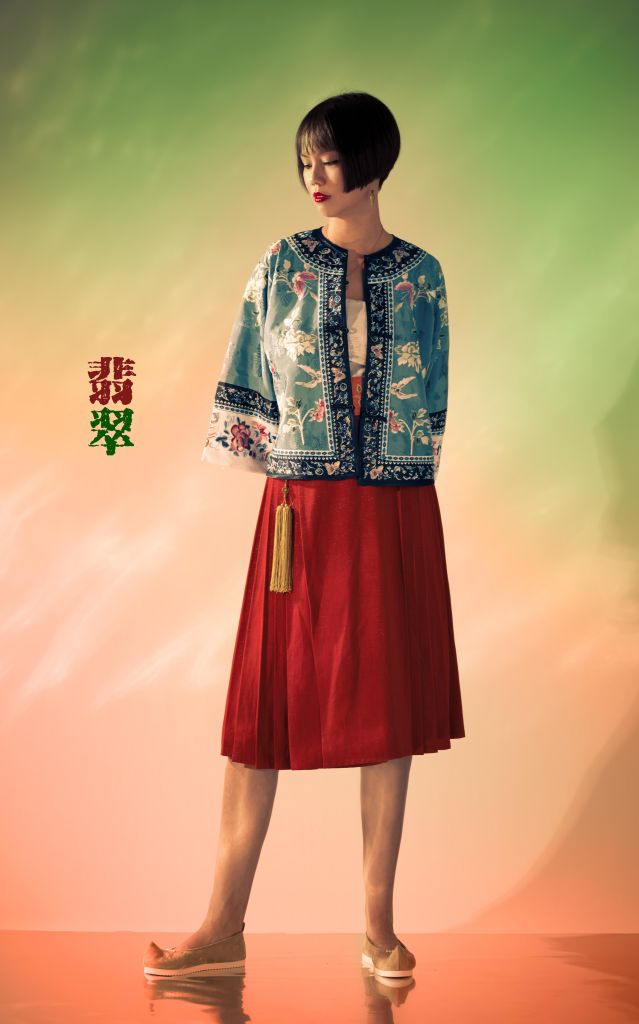
An iconic book written by an established jade collector of 60 years, which talked about identifying traditional Chinese jade from the period, clearly identified Jadeite as an imposter of Chinese jade and dismissed it as being inferior to the real Chinese jade. Of course, it always comes along with moralisation and praises for the virtues of the ‘real’ Chinese jade. The book, besides teaching the different aspects of jade appreciation, also cautioned collectors on the type of ‘fake jades’ to look out for and how to identify them.
今人只知钻石翡翠,金银古铜古瓷之为贵,而不知“君子比德于玉”之可宝,其数典忘祖,已大谬矣。[…] 翡翠出于缅滇,其形似玉,实非玉也。
—刘大同《古玉辨》
People today only know of diamond and feicui (jadeite), gold, silver, old bronzeware and old ceramic’s high price. Oblivious to the precious value of the “Gentlemen’s virtues inherent in Jade”, and all the important teachings of our ancesters.[…] Feicui (Jadeite) came from Myanmar, and has the form of jade, but in fact it is not jade.
—LIu Da Tang, Identifying traditional jade (1940)
So what were the ‘real’ Chinese jades [that I will share in subsequent articles]? And how did jadeite become so popular and cost so much despite its apparent low status amongst the ‘literati’ and jade collectors at the same time-period?

JADEITE’S CHINESE HISTORY
If it’s not jade, then what was it considered? Stone.
Confucius (yes, that eternal sage) was asked why a true gentleman would treasure yu 玉(jade) and dismiss min 珉(beautiful stone that resembles jade). His answer was not because min was more abundant therefore less valuable, but that yu has the 11 virtues of a gentlemen (yes, there were as many as 11 virtues associated with a gentleman and therefore jade). Jadeite for all its showiness, wouldn’t befit the aspiration of a traditional Chinese gentleman-scholar.
An Undervalued Import
Although there were mentions of the word ‘feicui’ for beautiful stones some 2,000 years ago in the Han dynasty, we are unable to find any material documentation that it is the jadeite we know of today.
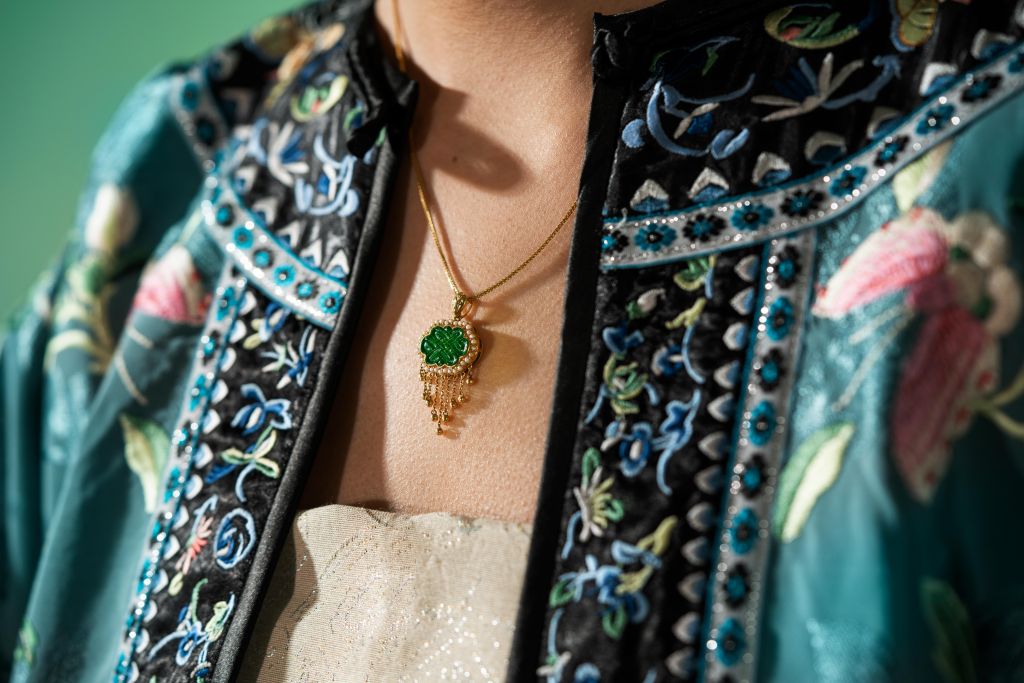
The actual traceable documentation of jadeite as we know today in Chinese culture, started around the Song dynasty (11th century) with a personal journal of a court official mentioned two Feicui items: one kept away in the imperial storehouse, possibly acquired through the Yunnan region which was the Da Li Kingdom then; the other was in the possession of a “Yu余” family. But elsewhere, the term ‘feicui’ was still referring very much to the kingfishers and feathers (more on Kingfisher feathers in these article: That Quintessentially Chinese Organic Gem called Feathers and Diancui, the traditional Chinese jewelry craft that ruffles feathers)
Even throughout the Ming dynasty, the term fei cui was mostly for kingfisher feather inlays (hugely popular then) and not for the stone (if any at all). And there was but one dubious artefact (not officially accepted nor in museum, but in private collection) from the period that was made of jadeite. This is peculiar since Ming was known for its sea expedition that brought in a lot of foreign goods and especially gemstones (this topic I will definitely go into in detail for our upcoming Yaji in May/June as part of the lecture).

Must be not important enough.
It was only lightly referenced in the travelog of a 17th century travel writer/geographer by the name of Yu Xia Ke on his trip to Yunnan (which borders Myanmer). In it, he mentioned that he was given 2 pieces of “Cui Sheng Shi 翠生石” (kingfisher colour/green colour stone, yes stone). One was mostly white with speckles of green, but his host in Yunnan who always travelled to Myanmar didn’t think that the white one was of much value, so he supplemented the gift with another jadeite that is entirely made up of intense green. The irony is, the travel-writer didnt’ seem to think highly of the green one, and thought higher of the white one with speckle of green. So it seems like even until the 17th century, Burmese Jadeite was seen more as a ‘local produce’ of Myanmar and not highly regarded by the elites, literati and collectors who had/have a monopoly over taste.
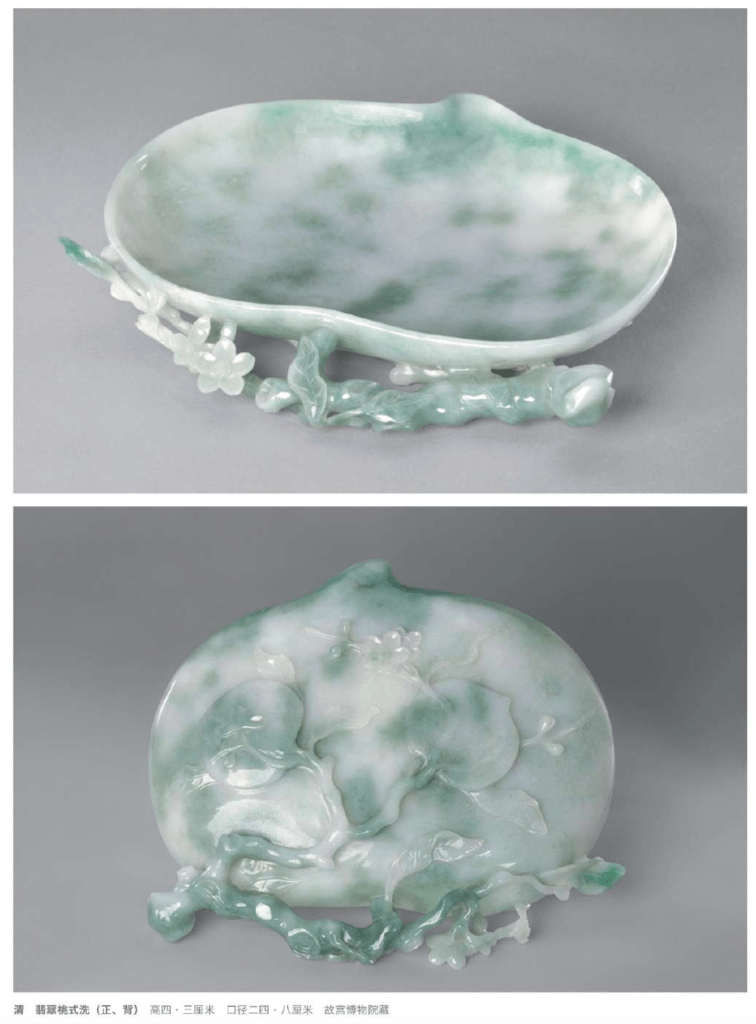
The popularisation is no more than 400 years which, in the context of the Chinese history of using jade, is really quite short. There’s an interesting story of how jadeite became popular amongst the Chinese and the superstar influencers/royals who pivoted it to great fame.
THE GODFATHER OF JADEITE—EMPEROR QIANLONG
A turning point in Jadeite’s accessibility to the Chinese market was the Sino-Burmese war that took place middle of the reign of Emperor Qianlong, sometime between 1765—1769. It was the Qing emperor’s invasion of Burma, and it indirectly force opened the doors to jadeite trading.
If you are a Yanxi Palace fan, you might remember the male lead Fuheng. Yes, he was sent to lead this war. Unlike in the show, he didn’t die there but 3 months after his return to Beijing as he contracted Malaria while in Myanmar.

Because of this warfare, there were more Chinese presence in Maynmar especially with 2,500 Chinese POWs who were resettled there. They uncovered the Feicui Jadeite mines, and they started more excavation and mining of jadeite. In fact there were Chinese records mentioning that the mining of Jadeites were by the Chinese.

But during his reign, the emperor himself wasn’t a fan of Feicui Jadeite. Funnily, there was this beautifully crafted feicui jadeite fish shape box (below) with engravings of a poem by the Emperor Qianlong entitled “Ode to the Hindustan Jade Fish“.
Emperor Qianlong was notorious for his graffiti on everything he liked. From ancient paintings and scrolls to newly acquired items. In all his 800 over poems on jade, none was dedicated to feicui (jadeite). Even if it were (as above), it was a case of mistaken identity. While he did have other poems with irrelevant content engraved on feicui (jadeite) items, these items were largely white, or white with slight traces of green.
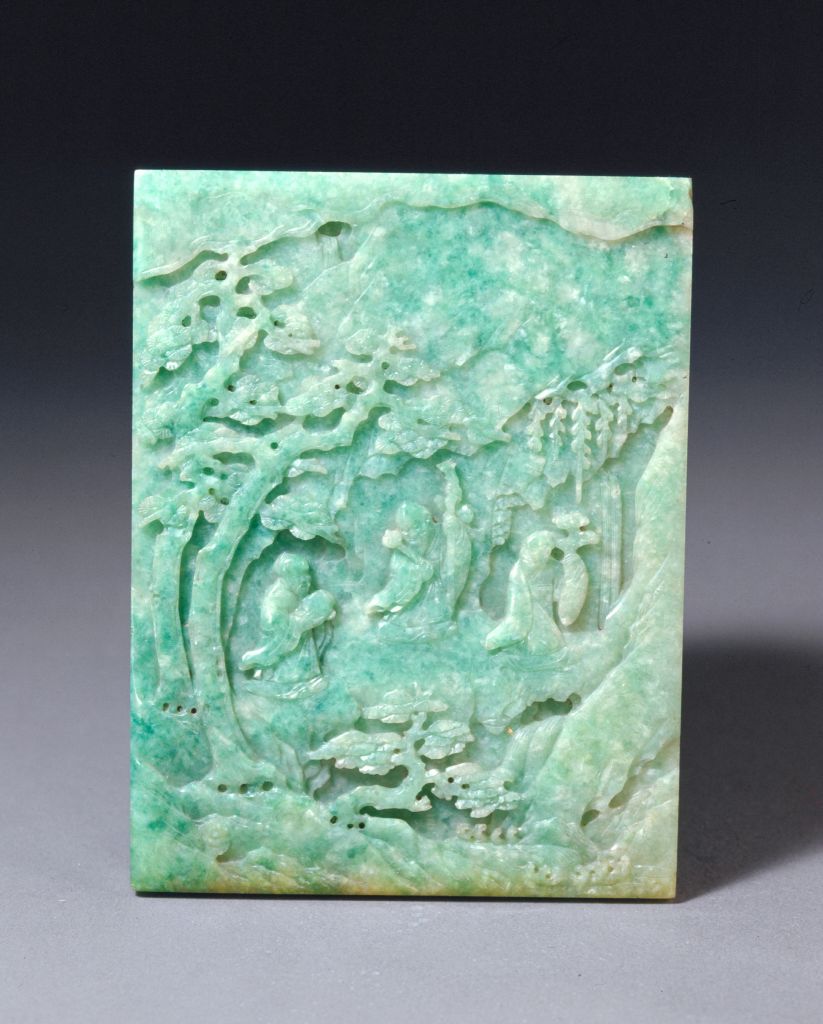
After his reign, there were increasingly more engravings on feicui (jadeite) items but they were mainly confined to wares like bowls, and mainly white, or with slight traces of green. If they were of green colour, it was not the glassy, full coloured ‘imperial’ green that has been marketed to insane price today, but more of an opaque green with speckles of whites across as above.
I will dedicate another piece on the Chinese taste in jade (and gemstones), why they are not cut and faceted, and their opaqueness another time.
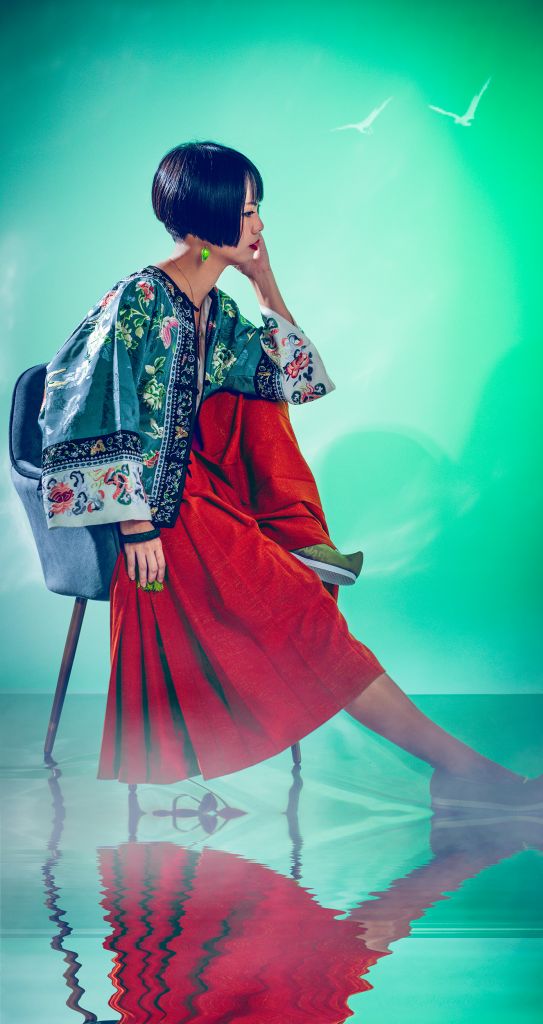
Of course that’s a man’s world. In a woman’s world, aristocrat women and women from elite families adored feicui (jadeite) and caused a surge in its value.
Feicui (jadeite)’s commercial successful indirectly propelled its status as jade towards the late Qing dynasty and the court officials started incorporating them into their official court beads. Now, there were very very strict rules on court beads’ materials, and they had to correspond to one’s rank. The incorporation of feicui (jadeite) into the court beads were likely ‘illegal’ but it kind of signified a shift towards accepting feicui (jadeite) in a more formal setting.
THE AUDREY HEPBURNS OF JADEITE
We always need fashionistas to change taste forever. And they’re always women. *hairtoss moment*
The Upper East Side
That first woman was Empress Dowager Cixi.
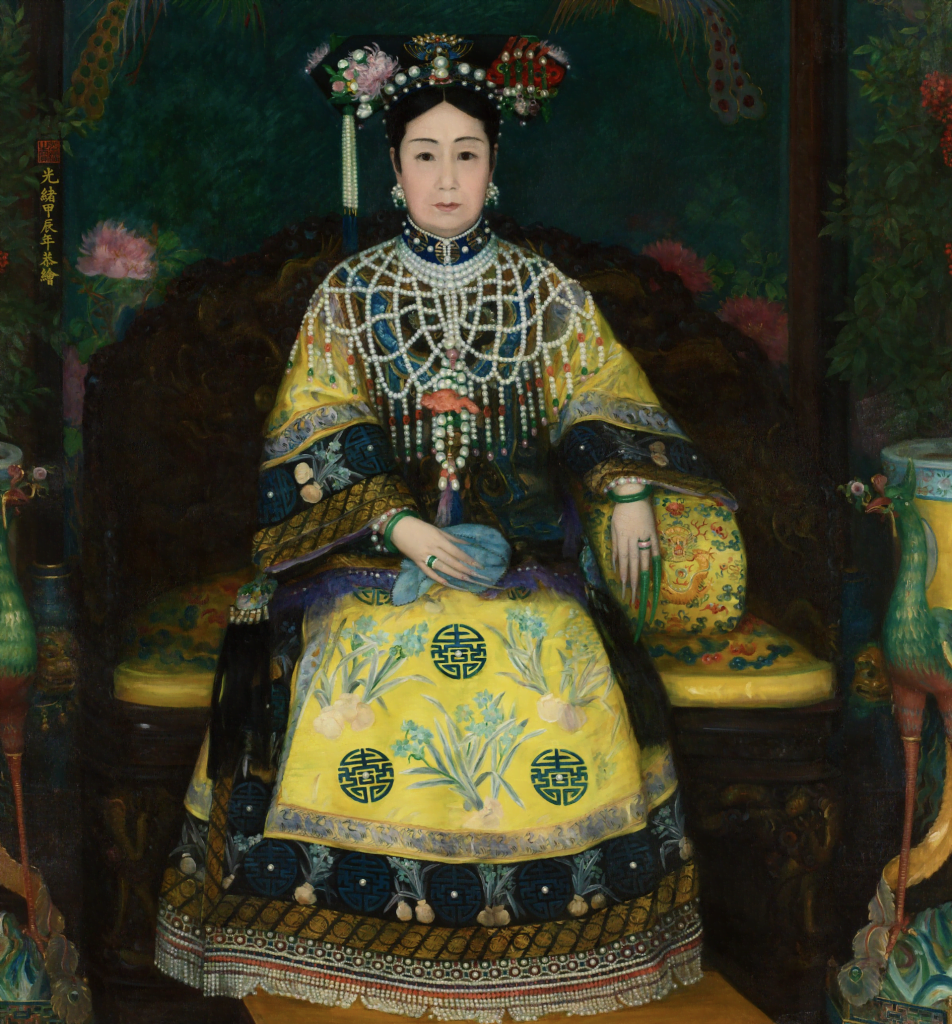
Oil painting of the Empress Dowager Cixi 慈禧太后 (1835-1908) (Partial) painted by Katherine A. Carl (1865–1938) in 1903 on a 297.2 × 173.4 cm canvas, framed in a camphor wood frame designed by Cixi. COLLECTION
Freer Gallery of Art and Arthur M. Sackler Gallery ArchivesSmithsonian Institution
Besides her love for tourmaline (another topic for another day, focus on jadeite first! I know, my ADHD mind goes all over the place all the time but they’re all so interesting topics I can’t help it!), she was most famously known for her role in elevating the status of feicui (jadeite).
While feicui (jadeite) was gaining popularity in the late Qing period, Empress Dowager often requested for more feicui (jadeite) tributes from various official departments. The top quality feicui (jadeite) were reserved for her, causing a further surge in the exclusivity and price of high quality jadeite.
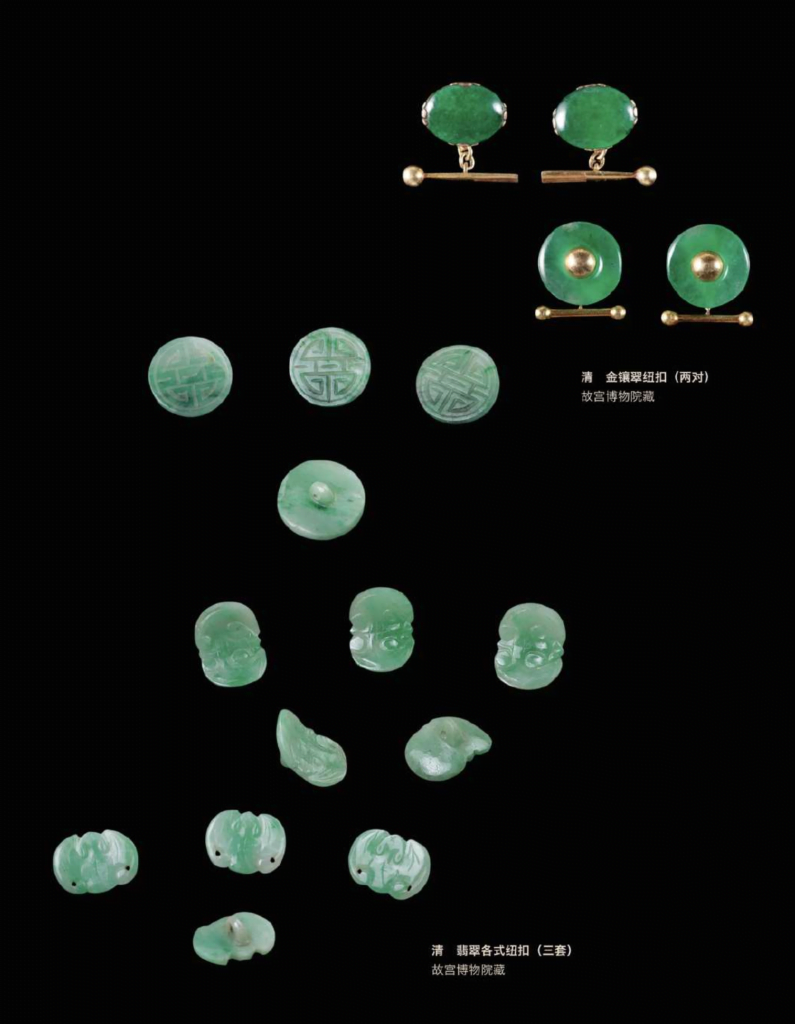
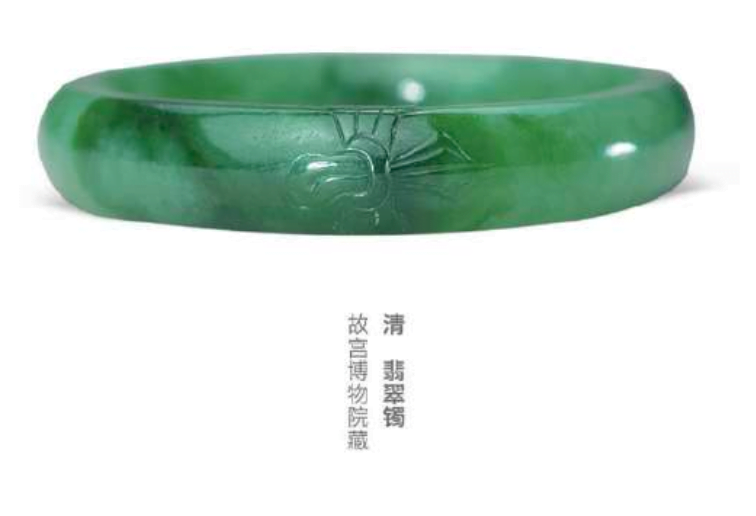

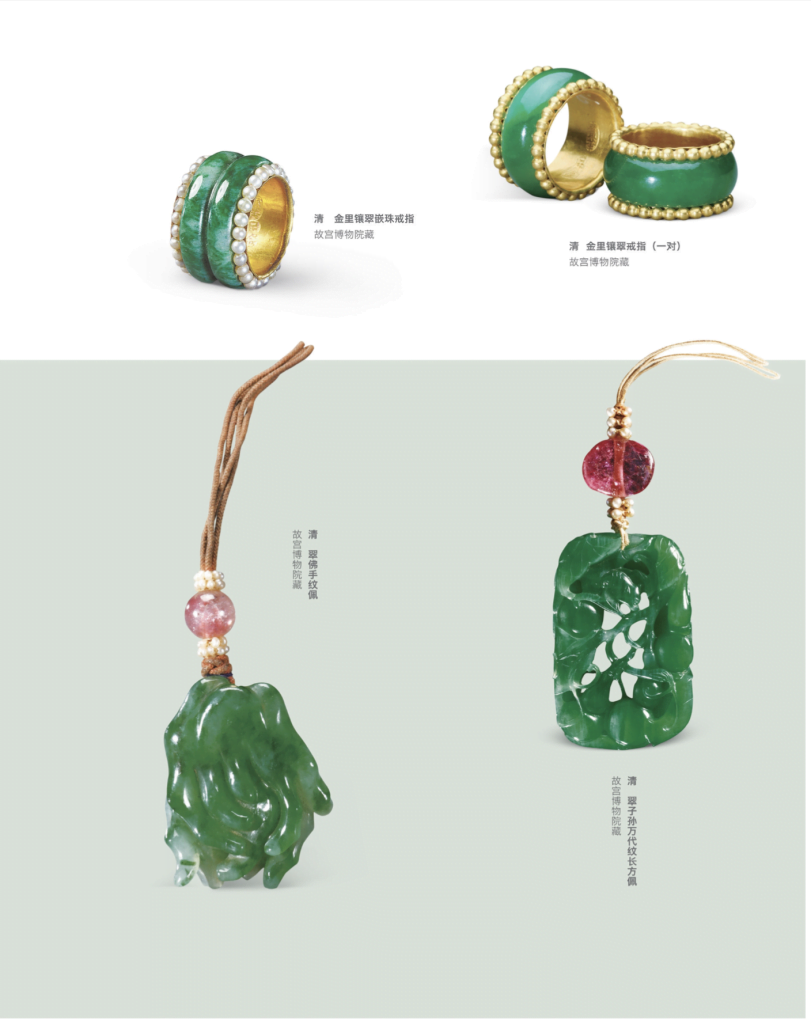
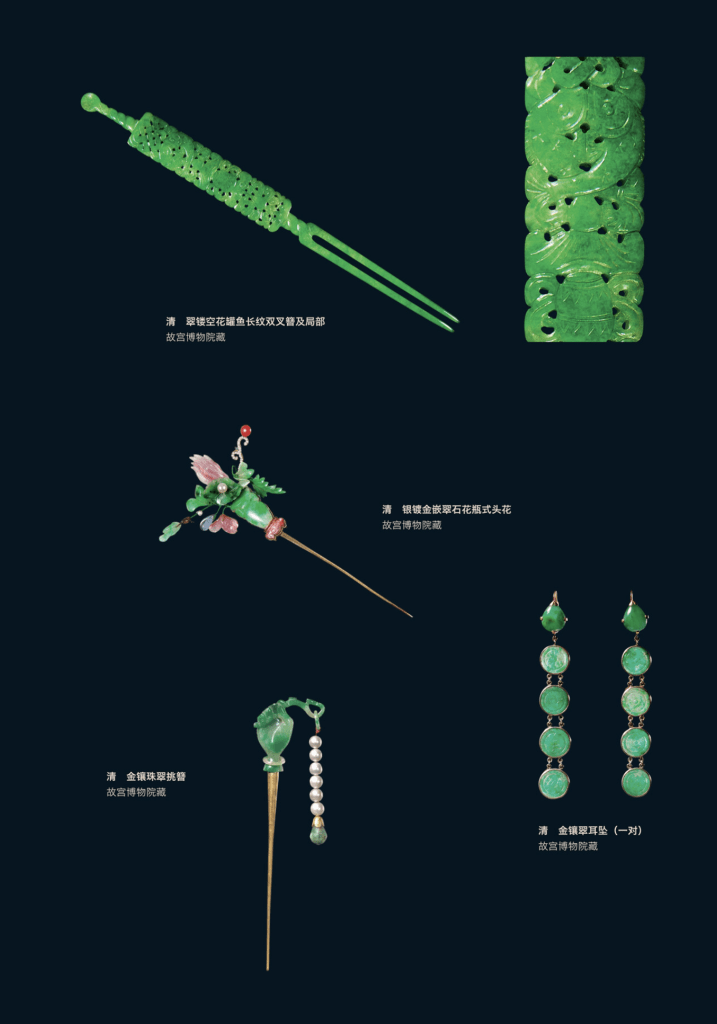
In a memoir by “Princess Derling” (not a real princess, but a self-proclaimed one for marketing purposes, like you-know-who), she mentioned that Empress Dowager once said, Feicui (jadeite) are more suited for young women, and would not look good against the skin of older ones.
Because of Cixi, the Palace Museum collection has such an abundant of antique feicui (jadeite) pieces (over 800 pieces) which tops the chart across the world.
The Western Sensation
For all their loves of transparent brilliantly cut gemstones, jadeite was not the natural choice of stone in the West until American socialite and heiress Barbara Hutton wore a jadeite beaded necklace by Cartier in 1933. It was a wedding gift from her father and eventually found its way to the auctions in 1988.
The jadeite bead necklace made its debut in the auction market in 1988, when it fetched an impressive USD 2 million, which was the highest price ever paid for a piece of jadeite jewellery, causing a great sensation both in the East and the West. Six years later in 1994, the necklace took centre stage at an auction room in Hong Kong and was sold for double its previous hammer price, achieving an astonishing US$4.2 million, setting a new record yet again for jadeite jewelleries worldwide. Since then, this impressive jadeite bead necklace has become one of the most legendary and important piece of jadeite jewellery known to the world.
Sotheby’s
The legendary necklace is known as the Hutton-Mdivani necklace is currently in the Cartier collection. Its original auction price of USD 2 million then auctioned off for twice its previous value in 1994 before finally being sold back to its original maker Cartier for another record of USD 27.44 million in 2014. Looks like it’s found its final resting place. Well, until further notice.
The origin of the jadeite beads were unknown but it was believed to be cut in the 18th century, possibly as an imperial collection or belonged to top official’s court beads.
I wouldn’t be surprised if Cartier had access to them as they have been having really close ties with the Qing imperial family since 1914 when Aisingoro Tsai Lun, the nephew of Empress Dowager bought a makeup case, a pouch, a timepiece, some chains and pen from Cartier in Paris. He was also the brother-in-law of famous Chinese-American writer Eileen Chang’s step mother, the step mother she often villainfied in her writings. Yes, everyone in gossip columns is connected in some way.
So I have come to the end of a very long but hopefully good start of my first jaded series article.
Stay tuned for the rest of the series! I promise it will be quite a paradigm shift!
Also drop me a note/comment/email to let me know what other burning questions you have, or what you think about jade in general!

About this series of photos:
I took this series with support from our friendly models Jamie, Elizabeth, Kelda and Night, in the freshly done up studio of Dressed Up Dreams Photo Studio (do check them out for your personal hanfu-themed photoshoots). Sharon from Dressed Up Dreams was also the highlight of the shoot (literally), bringing the best lighting expertise to the shoot. I’m a natural light photographer so definitely needed a lot of help with the lighting and effects.
The Qing-styled cropped tops are available for purchase in various colours (but I have no time to take the photos or upload them yet in the shop, but will do that soon so you can maybe get them in time for CNY!).



Leave a Reply